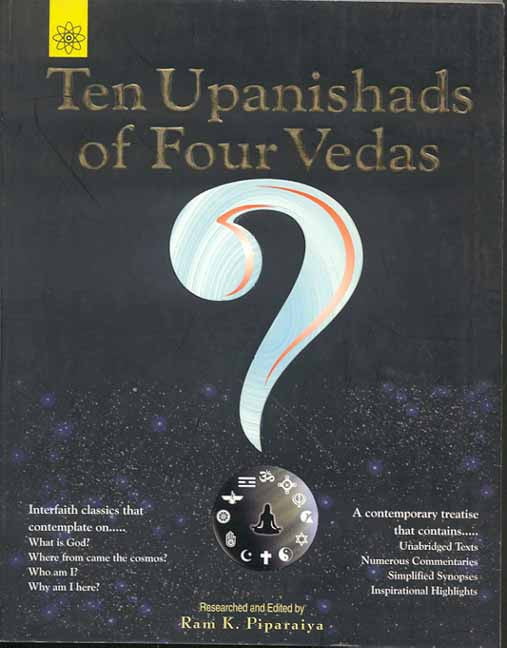Showing posts tagged as Upanishads
The Upanishads (; Sanskrit: उपनिषद् Upaniṣad [ˈʊpɐnɪʂɐd]) are ancient Sanskrit texts of spiritual teaching and ideas of Hinduism. They are the part of the oldest scriptures of Hinduism, the Vedas, that deal with meditation, philosophy, and spiritual knowledge; other parts of the Vedas deal with mantras, benedictions, rituals, ceremonies, and sacrifices. Among the most important literature in the history of Indian religions and culture, the Upanishads played an important role in the development of spiritual ideas in ancient India, marking a transition from Vedic ritualism to new ideas and institutions. Of all Vedic literature, the Upanishads alone are widely known, and their central ideas are at the spiritual core of Hinduism.The Upanishads are commonly referred to as Vedānta. Vedanta has been interpreted as the "last chapters, parts of the Veda" and alternatively as "object, the highest purpose of the Veda". The concepts of Brahman (ultimate reality) and Ātman (soul, self) are central ideas in all of the Upanishads, and "know that you are the Ātman" is their thematic focus. Along with the Bhagavad Gita and the Brahmasutra, the mukhya Upanishads (known collectively as the Prasthanatrayi) provide a foundation for the several later schools of Vedanta, among them, two influential monistic schools of Hinduism.Around 108 Upanishads are known, of which the first dozen or so are the oldest and most important and are referred to as the principal or main (mukhya) Upanishads. The mukhya Upanishads are found mostly in the concluding part of the Brahmanas and Aranyakas and were, for centuries, memorized by each generation and passed down orally. The early Upanishads all predate the Common Era, five of them are in all likelihood pre-Buddhist (6th century BCE), stretching down to the Maurya period, which lasted from 322 to 185 BCE. Of the remainder, 95 Upanishads are part of the Muktika canon, composed from about the last centuries of 1st-millennium BCE through about 15th-century CE. New Upanishads, beyond the 108 in the Muktika canon, continued to be composed through the early modern and modern era, though often dealing with subjects that are unconnected to the Vedas.With the translation of the Upanishads in the early 19th century they also started to attract attention from a Western audience. Arthur Schopenhauer was deeply impressed by the Upanishads and called it "the most profitable and elevating reading which... is possible in the world". Modern era Indologists have discussed the similarities between the fundamental concepts in the Upanishads and major Western philosophers.
4 points |Uncommented | discuss | cached
3 points |Uncommented | discuss | cached
5 points | 3Answer
